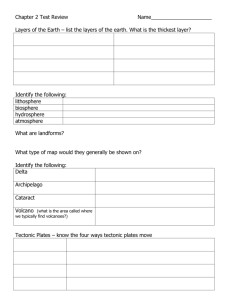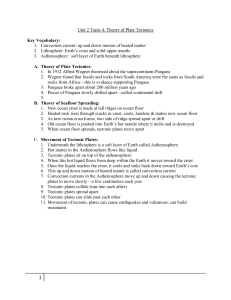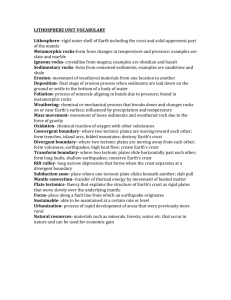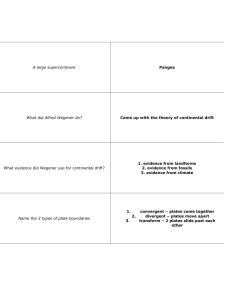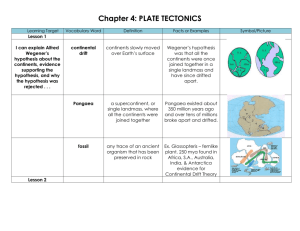Temperate Deciduous Forest
advertisement
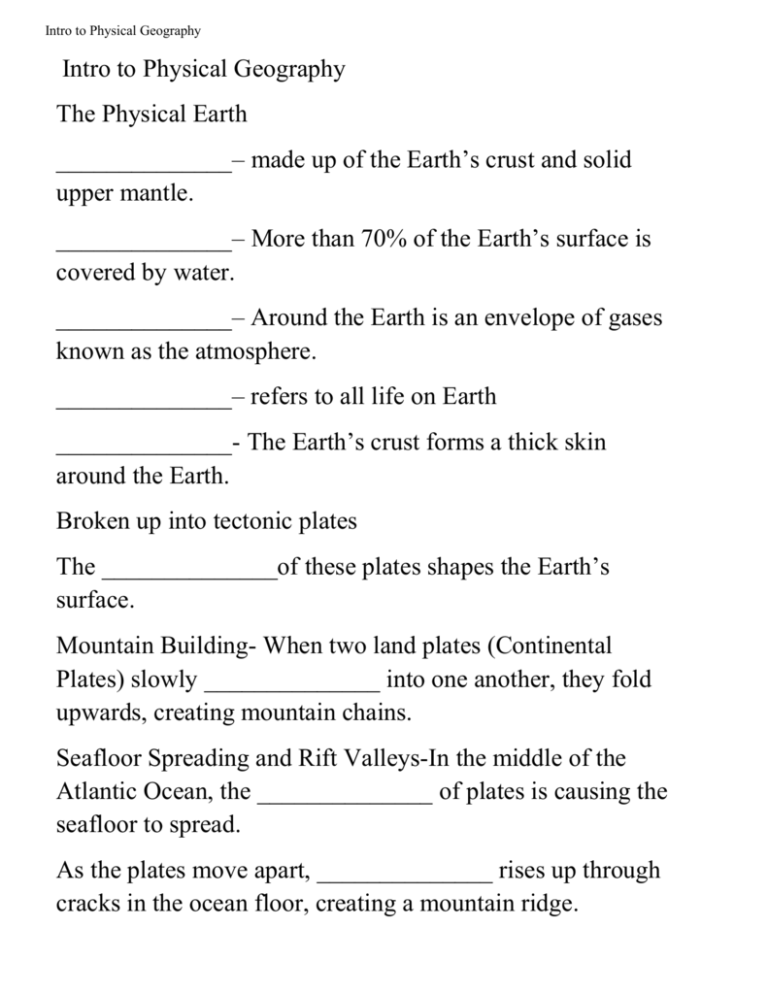
Intro to Physical Geography Intro to Physical Geography The Physical Earth ______________– made up of the Earth’s crust and solid upper mantle. ______________– More than 70% of the Earth’s surface is covered by water. ______________– Around the Earth is an envelope of gases known as the atmosphere. ______________– refers to all life on Earth ______________- The Earth’s crust forms a thick skin around the Earth. Broken up into tectonic plates The ______________of these plates shapes the Earth’s surface. Mountain Building- When two land plates (Continental Plates) slowly ______________ into one another, they fold upwards, creating mountain chains. Seafloor Spreading and Rift Valleys-In the middle of the Atlantic Ocean, the ______________ of plates is causing the seafloor to spread. As the plates move apart, ______________ rises up through cracks in the ocean floor, creating a mountain ridge. ______________-In a place where tectonic plates diverge or where one plate dives under another, pressure in the Earth’s mantle is reduced and some of the hot, solid rock turns to liquid This liquid______________is looking for a weakness in the Earth’s crust to vent. Volcanoes-When the magma breaks through and reaches the earth’s surface, it is called ______________. Most volcanoes are located on the______________of plates ______________-The wearing down of rocks at the Earth’s surface by wind water ice and living things. ______________-The process by which rock sand and soil and broken down and carried away. ______________-The same forces that erode one place can deposit particles and sediment in another. Rivers carry sediment downstream and deposit the sediment where the river meets the ocean ______________ Ocean waves can bring______________to a beach Soil: A building process ______________ breaks down rocks Broken down rocks mix with______________plants and animals (humus), water, fungi, bacteria etc. Different types of soil Texture Ability to hold water Ability to ______________ vegetation Landforms ______________ - often formed by the collision of tectonic plates, can be thousands of feet high in elevation ______________– a flat highland whose sides drop suddenly because of erosion ______________ – long, low areas between mountain ranges, hills or uplands, often created by erosion ______________– a deep gorge or ravine between cliffs, often carved by a river Hydrosphere More than ______________of the Earth’s surface is covered by water; 97% of this water is in the oceans; Most of the remaining 3% is frozen in the polar ice caps Less than 1% is found in the ______________, ground water, lakes or streams Currents Ocean______________occur at the surface and below @ the Equator the Earth’s rotation pushes surface water toward the ______________ – sets in motion large circular surface currents Water heated by the sun moves toward the poles The ______________Stream carries warm water towards Great Britain making it warmer than it normally would be Under the surface, cold water sinks, then slowly moves toward the ______________, pushing warmer water away This water slowly______________heat Circulation takes ______________ of years The Atmosphere The ______________ of gases surrounding the Earth; Absorbs solar radiation; Moderates temperature; Distributes water Climate Regions High-Latitude Climates –______________ Near the poles; Very cold Mid-Latitude Climates – ______________ Warm summers; Cool winters Low-Latitude Climates - ______________ Biomes Temperate Deciduous Forest Develop in Temperate/ ______________zones Ample rainfall; Moderate temperatures with cool winters ______________change colors in fall; Trees lose leaves in winter Wide range of plant and animal life ______________Rain Forest Develop in Tropical/ low-latitude zones Ample rainfall; Warm temperatures year round; Large trees form ______________ ______________and diverse plant and animal life ______________/ Savannas/ Steppes Exist where climate is drier; Not enough rain to support large amount of trees; Dominated by______________; Large grazing animals – cattle, ______________, bison *Savannas are grasslands with some trees (Africa) Desert Receive less than 10” of rainfall per ______________; Tropical/ low-latitudes; ______________ that has adapted to the lack of water (cacti) and store water in their stem Tundra Found closer to the polar regions; ______________ – permanently frozen soil; Grasses and small shrubs; Trees cannot grow

